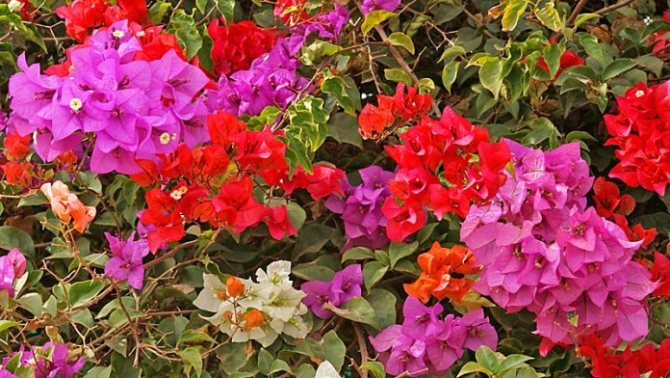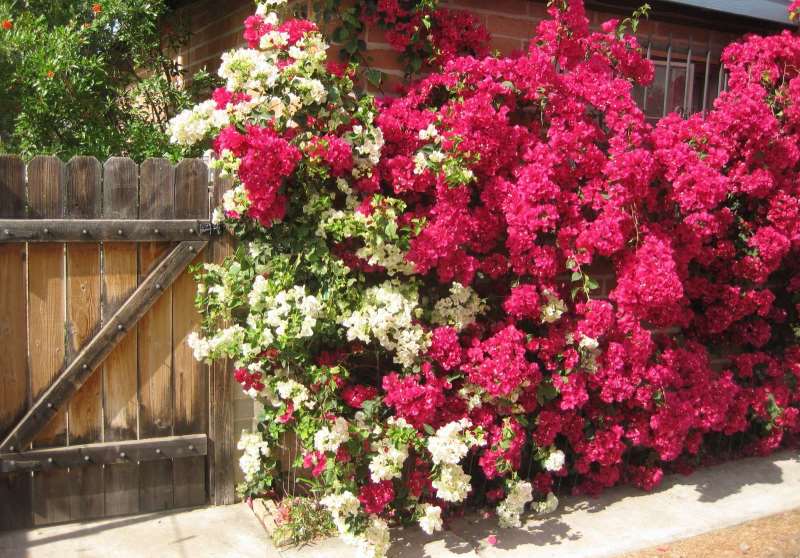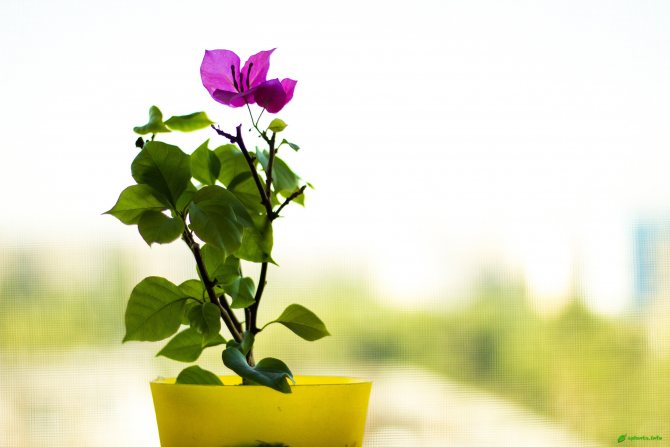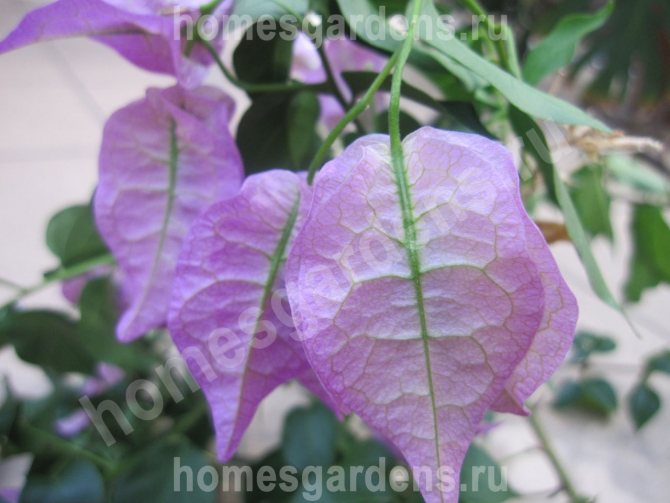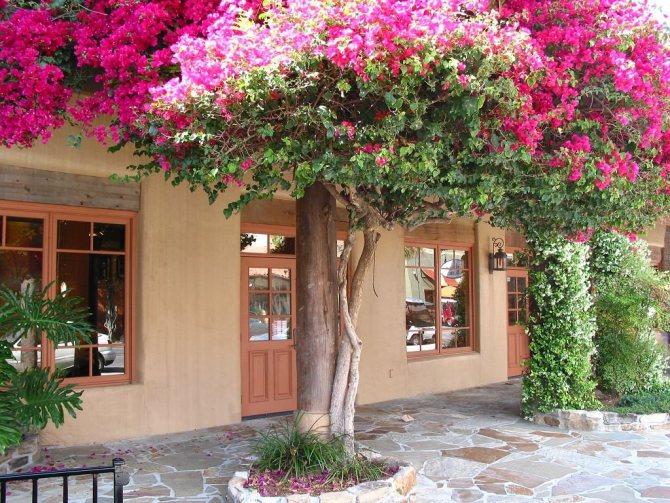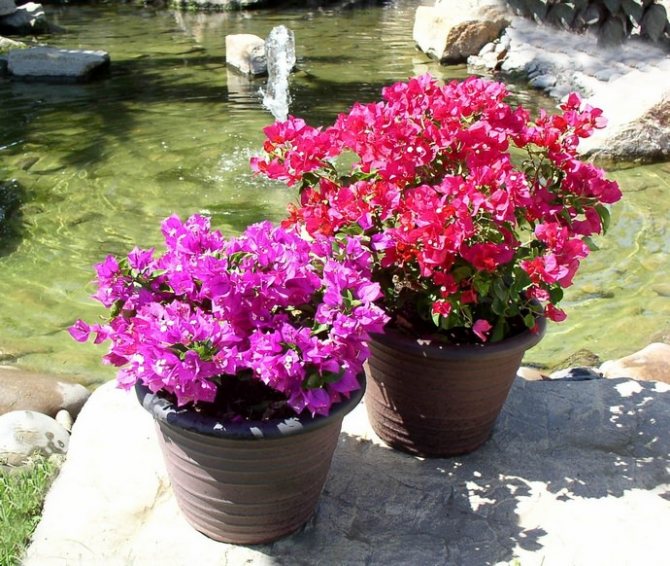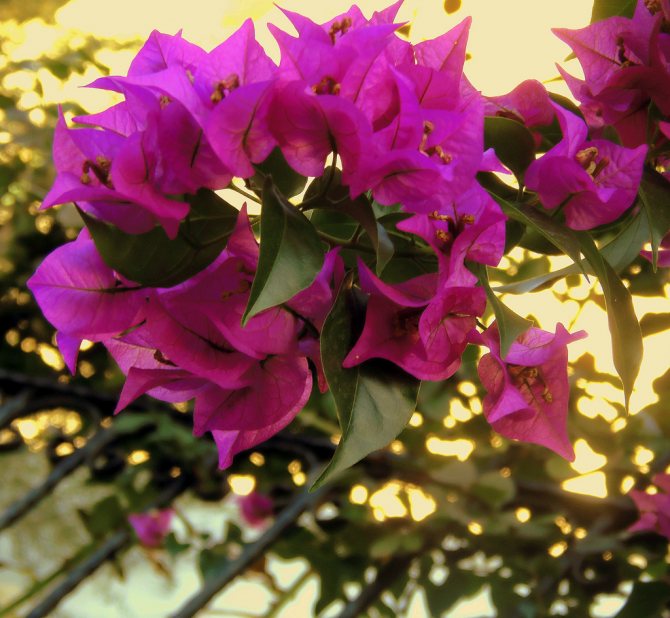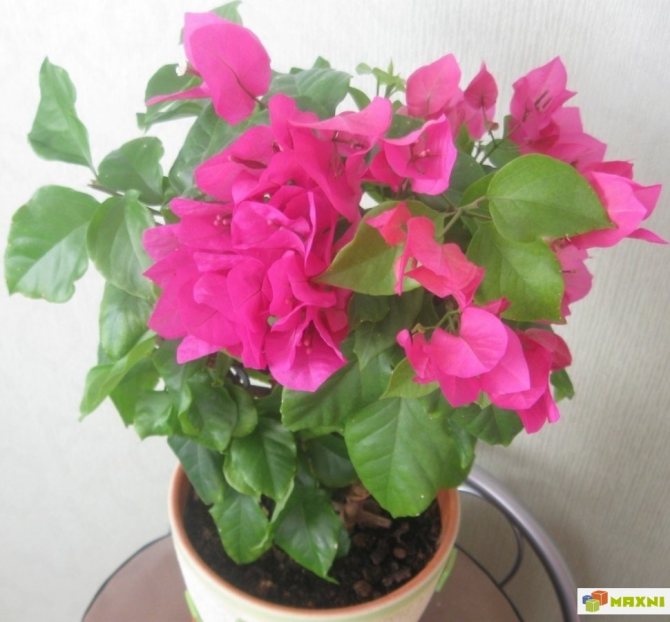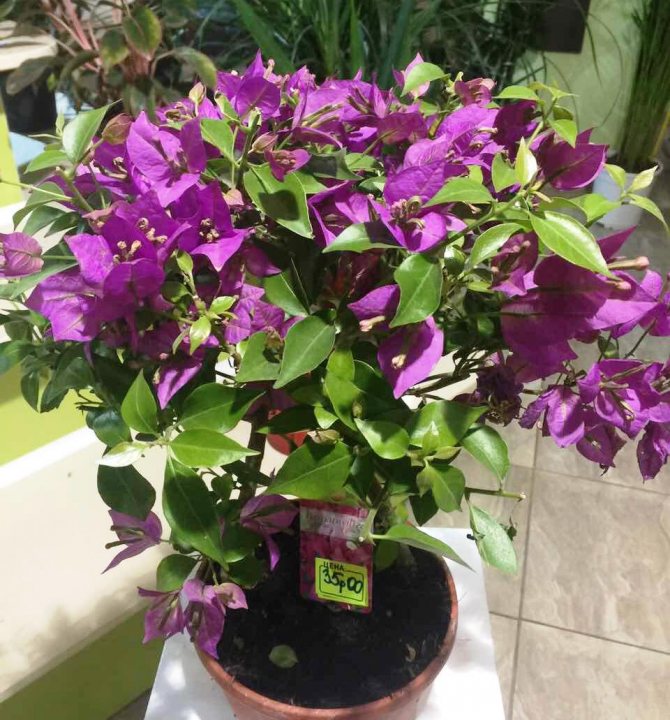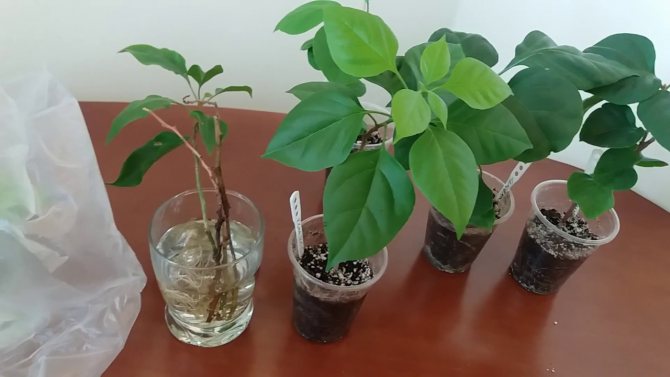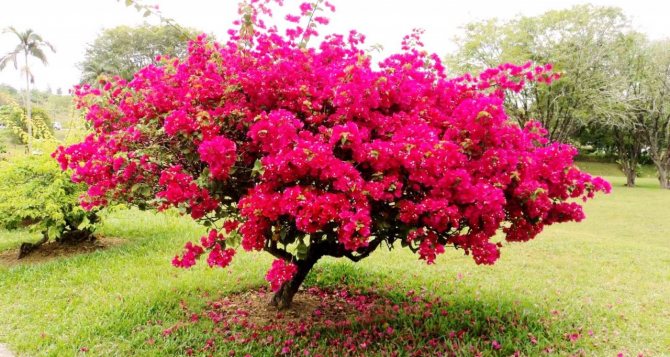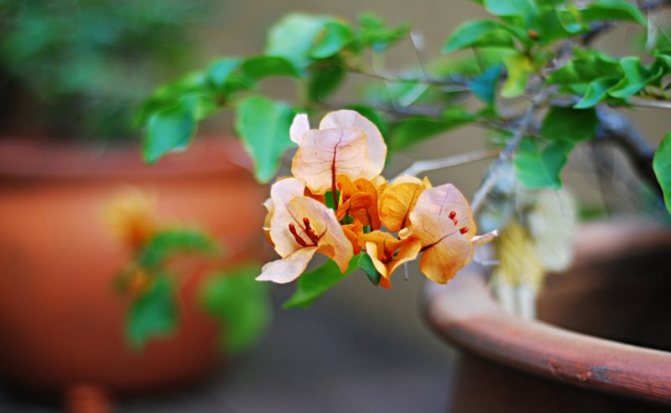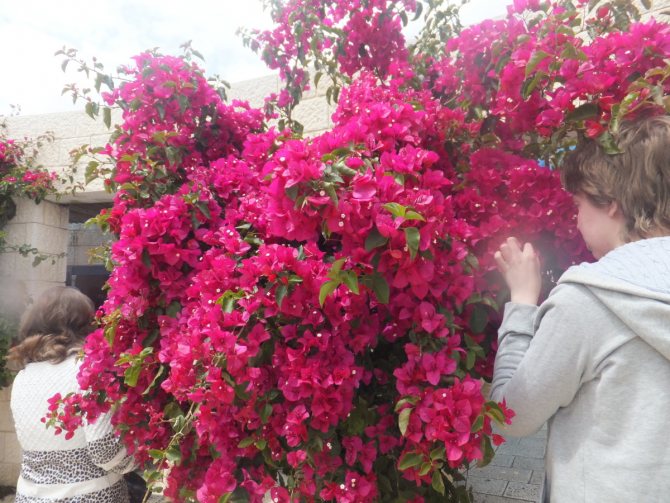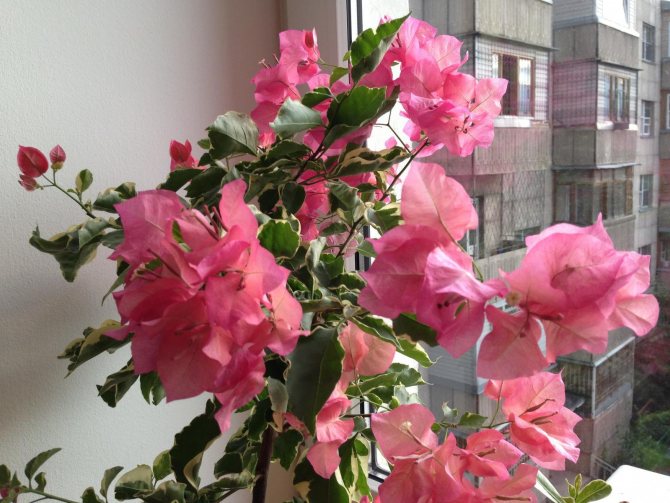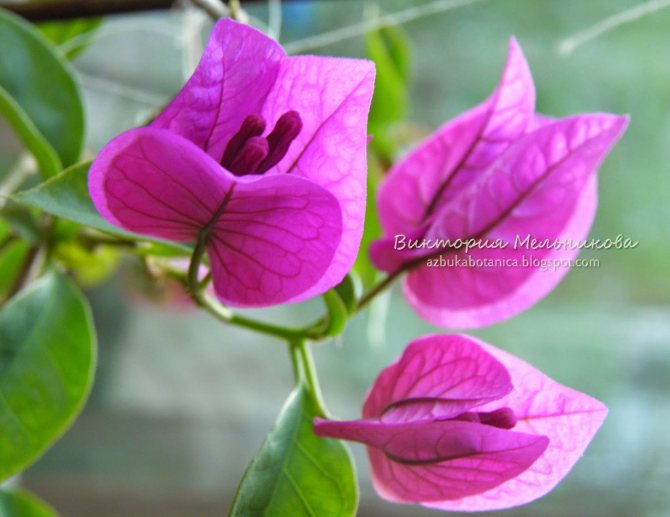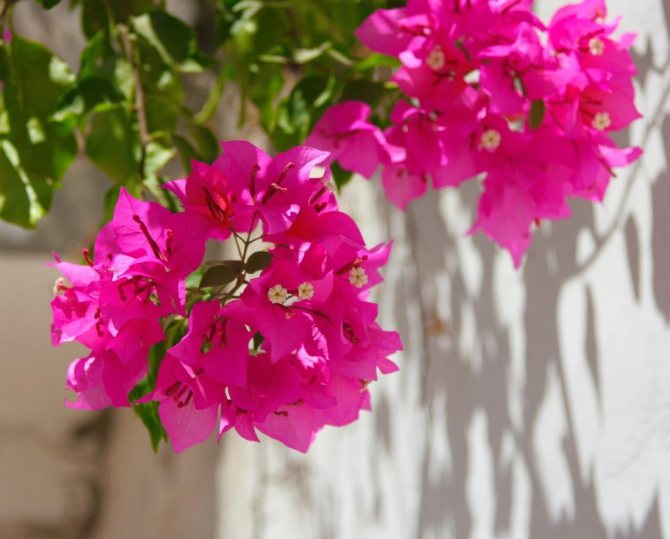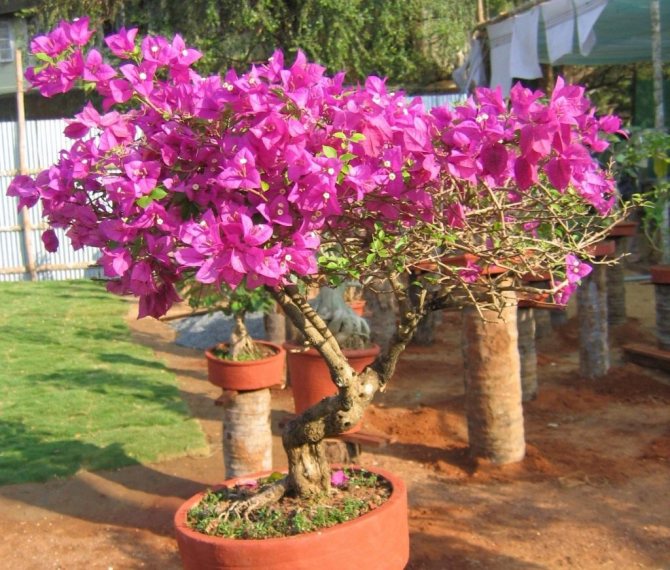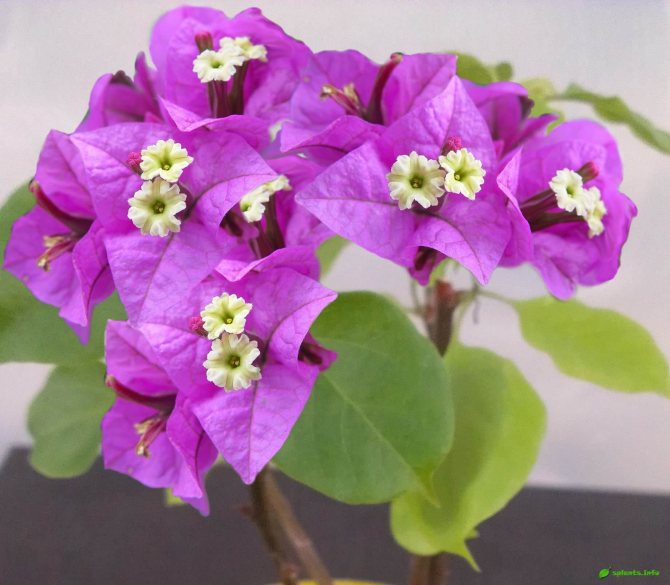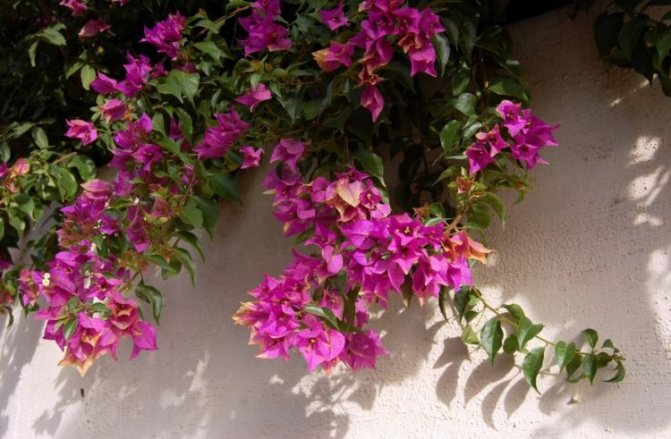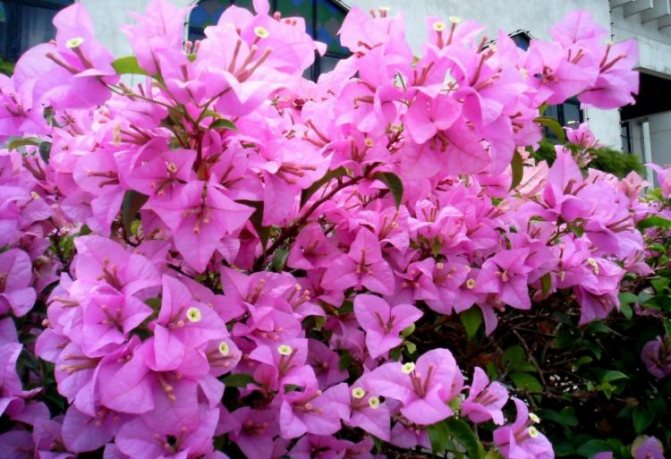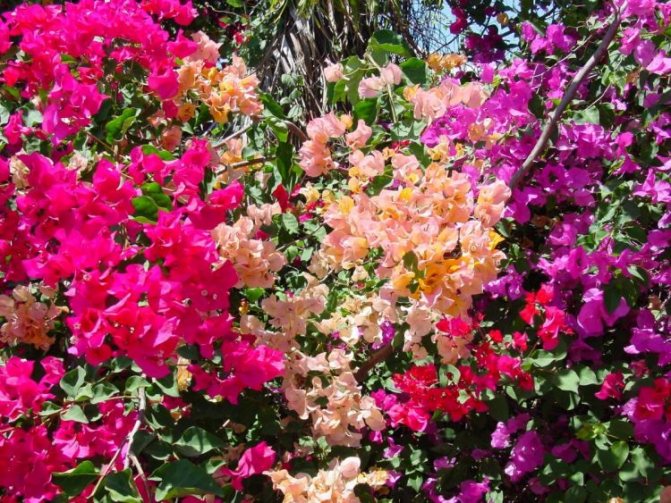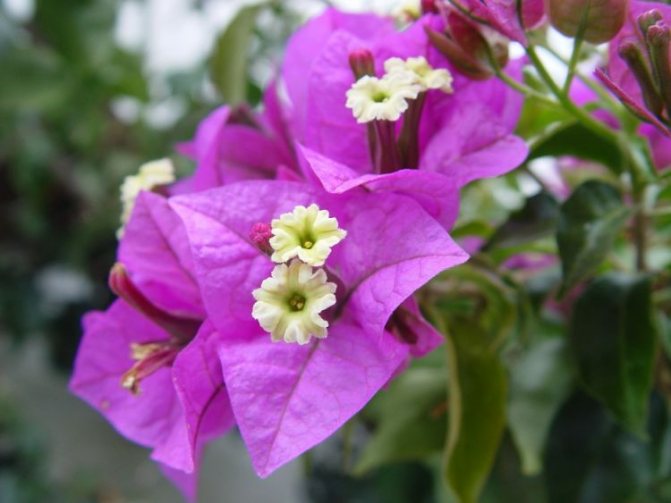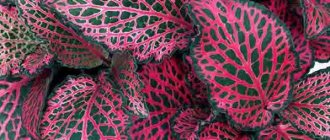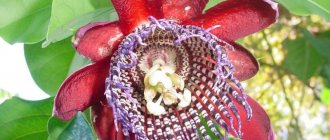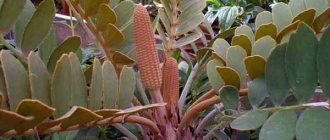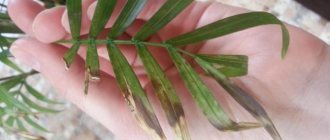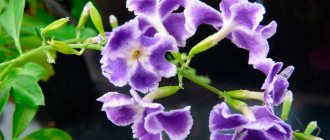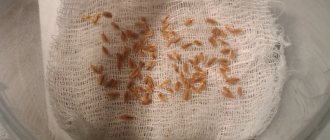Indoor flowers today amaze the imagination with their diversity. Some of them are striking representatives of the tropical flora and require close attention to the rules of planting and care at home. The bougainvillea indoor flower is an angiosperm of the Nyctaginaceae family of the Bougainvillea genus. The natural growth area is the vastness of South America and Brazil, in the west - from Peru to Argentina in the south. Different researchers distinguish from four to eighteen species in the genus.
For the first time, the flower was described by the French botanist Philliber Commercomé, who accompanied the fleet of the French admiral and explorer Louis Antoine de Bougainville at that time on a trip around the world. It is quite possible that this plant was mentioned even earlier by two famous Europeans - Jeanne Bare and Antoine Laurent de Jussier (it was he, according to some scientists, who published the first information).
After a while, several more publications about the flower appeared, and subsequently the genus was constantly divided and each time in different ways. The name of the flower also changed constantly until it was finally changed to Bougainvillea in 1930. It first appeared in European gardens in France and England at the beginning of the 19th century, and it is worth noting that they were among the first. After a while, the sale of bougainvillea turned into a thriving commercial enterprise and in a short time it became known all over the world.
As soon as the flower began to spread, the first hybrid species appeared on the territory of East Africa, India, Australia, the Philippines, the Canary Islands and North America.
Gardeners recommend using the hanging flower as the main decoration on the trellises of windows or large bushes. Also, it is quite used when creating rock gardens and artificial barriers in the garden.
Features of growing bougainvillea
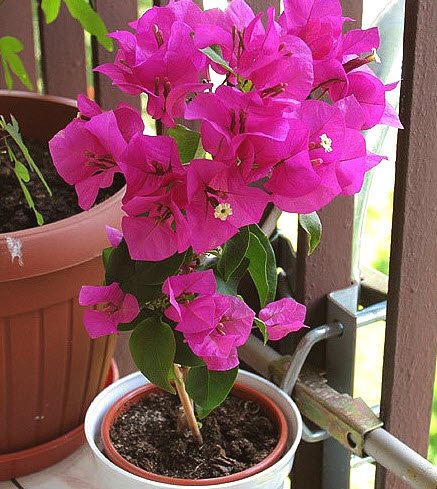
Bougainvillea home
When growing bougainvillea, do not forget about its thermophilicity. In warm countries, the flower pleases with continuous flowering and does not have a dormant period, but it is not able to withstand temperatures below +5 ° C. In the subtropical regions of the Caucasus, the plant sometimes manages to be kept in open ground throughout the year, but even in these conditions, a preventive shelter is required.
In the middle lane, bougainvillea is a greenhouse plant and is grown in greenhouses, greenhouses and houses.
The flower adapts well to conditions of detention that differ from natural ones. Indoor bougainvillea has a distinct dormant period and is not capable of continuous flowering, but with good care it can please the owner with bright colors several times a year. In summer, bougainvillea will feel great in the garden, on the balcony or terrace.
The plant can be called relatively unpretentious. Bougainvillea does not require special conditions for keeping, but it is necessary to know the rules for caring for a flower in order to achieve maximum decorativeness. Even a novice florist should not have difficulty in caring for a plant.
Bougainvillea outdoors
The plant is tropical and thermophilic. Therefore, a decrease or sharp drop in temperature will lead to the death of the plant.It can be grown in the garden only in the southern regions, where the air temperature in the coldest time does not drop below +5 ° C. In this case, it is necessary to constantly form the crown, since the plant branches poorly without pruning and will stop growing. In the summer, you can take out a flower pot or a decorated bonsai to a lighted area, you can use the culture as an ampelous plant in a hanging planter.


Bougainvillea, grown outdoors in southern countries.
Planting bougainvillea
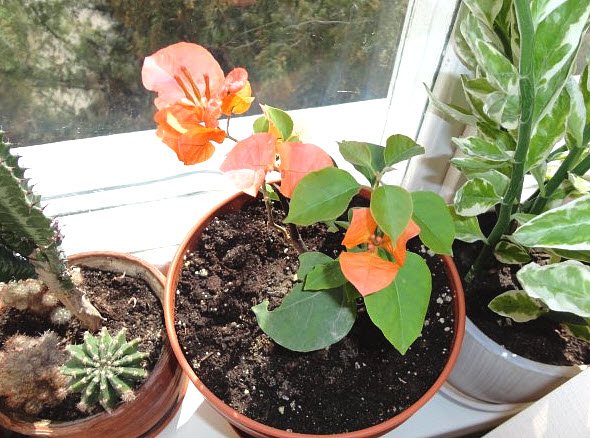

Proper planting is essential for good growth and intense flowering of bougainvillea.
There are 3 main components to consider when planting a plant:
- optimal soil composition;
- the right choice of a pot;
- the choice of a favorable time.
Most often, planting is practiced in pots and tubs (depending on size).
When growing in a greenhouse, you can drop plants with a flowerpot or simply plant them in the ground. In the latter case, bougainvillea grows very intensively for the first few years, but does not bloom.
Priming
To plant a plant, you need a nutritious but light substrate with good water and air permeability. You can simply use the all-purpose flowering potting potting mix available at any flower shop. But experienced flower growers prefer to prepare the substrate for planting on their own.
To do this, take:
- leafy ground (2 parts);
- sod land (2 parts);
- coarse sand (1 part);
- humus (part 1).
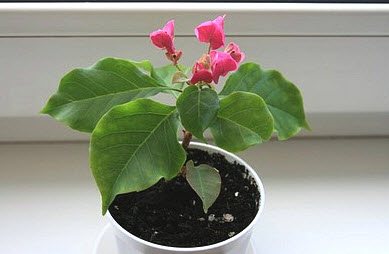

Important! As additional components, a small amount of vermiculite, clay, chalk, ash or other substances is sometimes added to the soil. Soil pH should be between 5.5 - 6.0.
Pot selection
In nature, bougainvillea often grows in a confined space, between stones, so a small pot must be chosen for planting and subsequent transplants. A spacious flowerpot stimulates the intensive growth of shoots and leaf mass to the detriment of flowering, and thin roots cannot always quickly master a new volume of soil, which leads to its acidification.
The new pot should only exceed the diameter of the old one by a few centimeters. The height of the flowerpot should be greater than the width, and a thick layer of expanded clay should be placed on the bottom.
Transplant time
At the beginning of spring, the plant wakes up after the winter dormant period and is ready to build up the underground and aboveground parts. This time is most favorable for planting and transplanting bougainvillea.
The plant can be dangerous
The culture blooms in summer, autumn and spring. Bougainvillea "Alexandra" has sharp thorns that can easily penetrate tissue and damage the skin.
The sap of the plant is only slightly toxic, but if ingested in sufficiently large quantities, it can cause allergic manifestations. A prickle of thorns leads to dermatitis, skin rashes. Symptoms of skin reactions caused by bougainvillea:
- pain;
- itching;
- burning;
- blisters;
- scaly rash;
- swelling and ulcers.
Home bougainvillea care
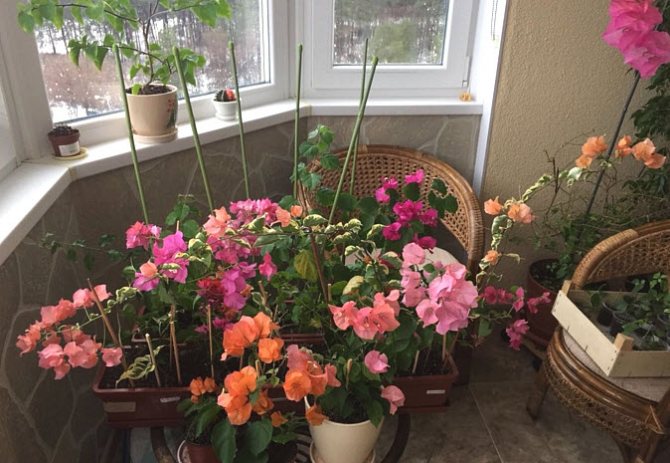

Growing bougainvillea is much easier than it might seem at first glance. The main thing with room maintenance is to bring the conditions as close as possible to natural ones.
Location and lighting
In nature, bougainvillea grows on rocky slopes and receives a lot of tropical sun, so at home you need to choose a place with maximum illumination, at least 5 hours of directional light per day. Even on sunny days, the plant does not need shading. The brightness of the bracts and the color saturation depend on the intensity of light. Bright lighting is also necessary in winter, despite the dormant period.
ATTENTION! Bougainvillea does not like movement, therefore, in an effort to find the best place, you should not move it from one room to another and twist it around its axis. Try to immediately choose a permanent place for the flower.
Air humidity
It is difficult to create at home the humidity characteristic of the tropics and subtropics, but this must be strived for. Bougainvillea loves high humidity and regular spraying., especially in between blooms. During flowering, spraying can be stopped or carried out very carefully so that water does not get on the bracts. The plant can be placed on a pallet of wet pebbles to increase moisture.
Temperature regime
Bougainvillea is thermophilic and does not tolerate temperatures below 10 ° C. The optimal temperature for summer maintenance is considered to be 20-25 ° С, winter - 12-16 ° С. Lowering the temperature is important for bud formation and abundant flowering. If bougainvillea is kept in warmer conditions in winter, then it needs to be provided with additional lighting.
Watering
The plant needs abundant watering, especially during the period of active growth. However, a balance must be struck between dryness and waterlogging. The earth ball must be kept moist, but not wet. Bougainvillea stops growing in the fall and prepares for a dormant period, so watering must be reduced, and then almost completely stopped. In the autumn-winter period, it is especially important not to overmoisten the substrate and only not to allow it to dry out too much.
Top dressing
Bougainvillea from spring to autumn needs regular fertilizing with liquid fertilizer. It is recommended to use fertilizers for flowering and budding as a top dressing, with a low nitrogen content and an increased content of potassium, phosphorus and iron. Excess nitrogen delays and weakens flowering.
Climatic conditions for the growth of bougainvillea
A small tree, shrub, liana with thorns is a description of bougainvillea. At home in Brazil, the plant blooms for 9 months a year. Not decorative flowers, bracts. They have different shapes, large, bright, from lilac to white. Behind the riot of color, as if paper plates, at times leaves are not visible.
Of the 18 existing species, it was possible to acclimatize and get hybrids from several varieties of bougainvillea:
- beautiful;
- Peruvian;
- naked.
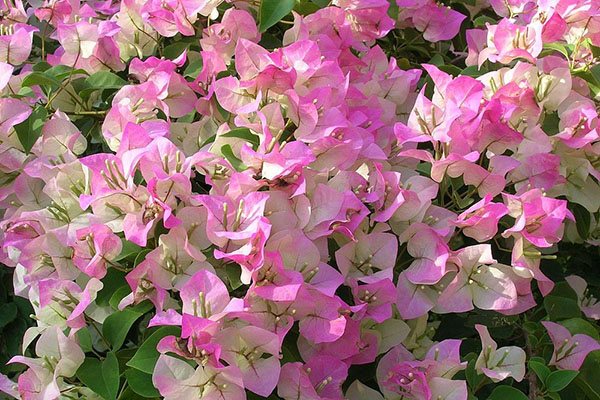

The plant loves space, a lot of light and warmth. Moreover, the temperature below +5 0 С for plant roots is unacceptable. Lowering the temperature to 0, even for a short time, is disastrous for a guest from the tropics. Where in the vastness of the homeland can a plant survive in natural conditions? Only in the southernmost latitudes of Crimea, on the Black Sea coast.
There, in natural conditions, you can admire the beauty of vines and bougainvillea bushes, garden planting and landscaping. In other regions, potted cultivation is used for decoration with taking out to the garden for summer maintenance. You can create compositions in conservatories and greenhouses. But this is a protected ground with a controlled climate.
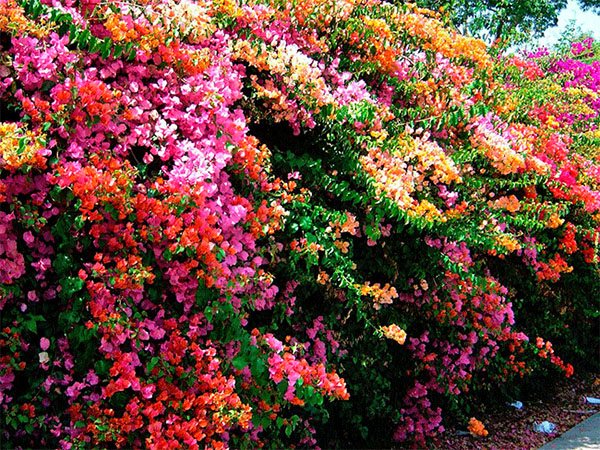

Bougainvillea in the Moscow region gratefully accepts relocation to fresh air when the threat of return frosts has passed. But the flowering period is short. In September, the plant must be saved again from a cold snap. But the spectacle of a blooming exotic pays for all the complexities of its content. Sometimes the tub with the plant is buried, and then it seems that the tree is growing out of the ground.
Planting and care of bougainvillea in the Northwest is carried out only in winter gardens, greenhouses. Keeping potted plants indoors is the only way to admire the beauty of tropical plants. In greenhouses and conservatories, bougainvillea should occupy the south side, without crowding.
Pruning and shaping bougainvillea


Pruning - one of the most important aspects of plant care. Pruning is necessary not only to form a beautiful plant, but also to stimulate flowering. This procedure is carried out several times a year. In the spring, pruning is carried out to remove dried out over the winter and weak shoots.In the summer, inflorescences that have lost their decorative effect are cut off. Autumn pruning is done to shape. The shoots are shortened by a third of the length or more, the excess ones are cut out.
Formation allows you to give the plant a certain appearance. It can be formed as a single-stemmed tree, in the bonsai style, in the form of a multi-stem bush, or on a support, giving any bizarre shapes depending on its configuration.
Several plants of different colors, planted in one pot, whose shoots are intertwined as they grow, look extremely decorative. Multicolored plants can also be created by grafting on a stem.
IMPORTANT! When pruning, be sure to leave 5-7 cm of the shoot of the current year, because dormant buds on old shoots are awakened very hard, and new shoots may not form.
Use cases and rules for combining with other plants
Due to the fact that in natural conditions this plant can grow up to 5 meters and more, it is widely used for decorating hedges. These flowers also look good on trellises or other types of supports.
With the help of pruning, these plants can be given the appearance of a tree, a wide bush or liana plant, as well as almost any kind of vaults and other forms at the request of gardeners.
Basic rules for combining with other plants:
- other flowering plants that match the color scheme should be planted next to bougainvillea;
- plants that are planted next to this flower should not interfere with the growth of bougienilia in height and width;
- also flowers should love sunlight and not tolerate stagnant moisture in the soil.
Transfer
When choosing a pot, soil and time for transplanting, you must be guided by the same criteria as when planting. The new flowerpot should only be a few centimeters more spacious than the previous one. It is not worth choosing a pot that is too large, because this negatively affects both flowering and plant health. Thin roots are not able to quickly master the earthy clod and the earth can turn sour.
It is advisable not to damage the roots and the earthen lump, but simply transfer the plant into a larger flowerpot, and fill the free space with soil. Transshipment is less traumatic for the roots than transplanting, so the plant tolerates this procedure more easily.
The frequency of replanting depends on the age and growth rate of the plant. Young bougainvilleas are recommended to be transplanted annually or once every 2 years, adults - once every 3-5 years, or as needed.
ATTENTION! Bougainvillea does not tolerate transplanting well, especially adult specimens. Plants can be sick for a long time, shed their leaves and not bloom.
Seat selection
To choose the right place for planting bougainvillea, you need to pay attention not only to the soil, but also to the degree of illumination of the site.
Lighting and shade
This plant is very fond of bright, diffused light, while it is not afraid of direct rays of the sun. In winter, bougainvillea has a dormant period, then the need for sun is slightly reduced. When growing a plant in a house, you should place it on the south side, otherwise you will need to provide additional lighting.
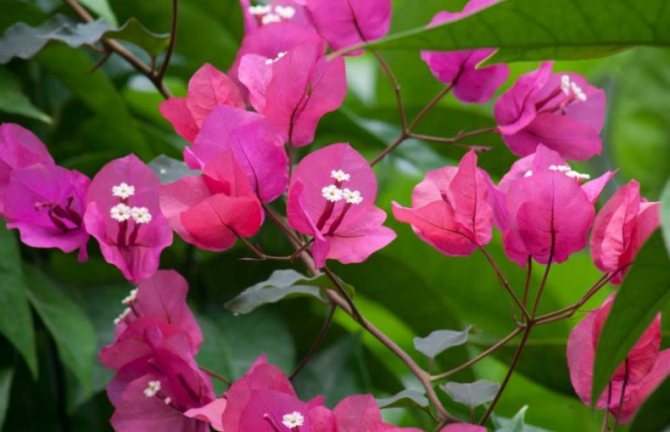

Growing soil
To grow bougainvillea bushes, you need a slightly alkaline dense soil. You can buy a ready-made substrate for tub plants in specialized stores or prepare the mixture yourself. This will require three parts of leafy land, the same amount of sod land, two parts of peat and one part of fine-grained sand. The soil must allow air and water to pass through, so one should not forget about high-quality drainage.
Reproduction


There are three main ways bougainvillea propagates:
- stem cuttings;
- air layering;
- seeds.
The seed method is the most difficult, since it is almost impossible to get seeds in the absence of a pollinator.In the wild, hummingbirds that live only in tropical countries are pollinators. In temperate climates, a hawk moth can sometimes be a pollinator, but ovary formation is very rare.
Stem cuttings are the most popular and easiest way to propagate. For reproduction, use summer semi-lignified cuttings, cut in June. Rooting is carried out at a temperature of 20-25 ° C and high humidity in a mixture of peat and sand. To create optimal conditions, you can use a greenhouse or simply cover the pot with cuttings with a plastic bag. Before planting, the cuttings are recommended to be treated with a growth stimulant. The likelihood of rooting will increase if the bottom heating of the container with cuttings is provided.
Propagation by air layers can be held at any time of the year. To do this, a pot with soil mixture is placed next to the plant, a young, non-lignified shoot is folded down, pinned to the ground and lightly sprinkled. In the place of contact with the soil, it is necessary to apply minor damage (scratches, cut) to stimulate the formation of roots. When the shoot takes root, the young plant can be detached.
Propagation by cuttings and layering makes it possible to preserve the variety of the plant. Layers are more likely to take root, but this method allows you to get only a few copies. When propagated by cuttings, not all planted plants take root, but this method is quite suitable for mass propagation.
Liana from the family of Nightlife
Bougainvillea is a genus of plants belonging to the Nektaginaceae (Nocta) family. In nature, the flower is found in the tropical rainforests of South America, in particular, Brazil. They are flowering vines with clinging thorns, although some bougainvillea species do not have thorns. The plant is quite large: it can grow up to 15 m in height. Leaf blades, dense and pubescent, are arranged alternately on a flexible shoot. They reach 13 cm in length.
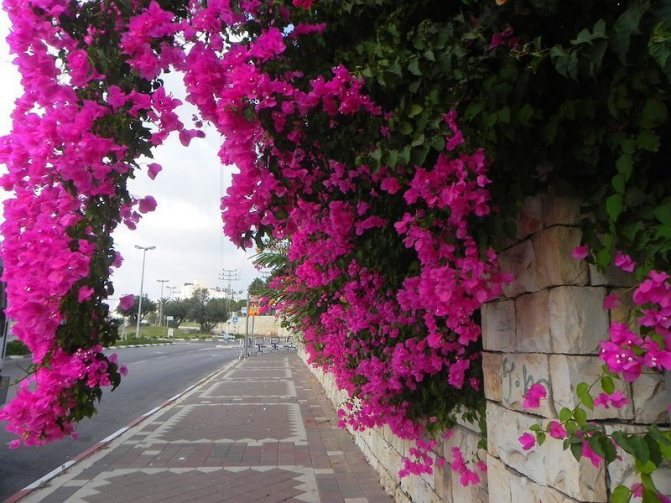

In countries with tropical climates, bougainvillea decorates gardens, parks and streets
The plant is popular for its lush and long bloom. Liana is covered with small flowers, collected in several pieces. By themselves, bougainvillea flowers are inconspicuous, and the bracts, painted in all sorts of shades of pink, purple, purple, red, orange, yellow, white, give them brightness..
Bracts are not flowers, they are modified leaves.
In indoor conditions, bougainvillea is grown in the form of a low shrub or ampelous plant. With the help of special props, the liana can be given any shape, for example, a pyramid, a wreath or a sphere..
Bougainvillea is considered a capricious plant that grows very poorly "in captivity" and feels better in a greenhouse or winter garden, where all the conditions for a tropicana are created. But if you find the brightest and warmest place for her, and also provide the necessary care, then it is quite possible to grow bougainvillea and make it bloom in the room.
Bougainvillea was discovered by naturalist and collector of rare exotic plants Philibert Commerson, who gave it a sonorous name in honor of his friend Louis Antoine de Bougainville, the first Frenchman to cross the Pacific Ocean.
Flowering bougainvillea


This is how it blooms
Thanks to its bright and long flowering, the plant has earned popularity among flower growers. Flower buds are laid in winter, and with the onset of spring, flowers bloom on the plant, the main charm of which lies in bright bracts.
The duration of flowering at home can be 6-7 months (May-November). In this case, the leaves of the plant can be completely hidden under the bright bracts.
The color of the bracts of a plant may vary depending on the variety and species. They can be white, yellow, peach, purple, purple, purple, pink.Terry bouggenvillea is especially beautiful, in which the bracts are located in several rows.
The flowers are short-lived, but the bracts adorn the plant for a long time. When the bracts lose their decorative effect, the shoot is cut off, leaving 7-8 buds of the young shoot. This pruning stimulates re-flowering on young shoots.
Species diversity
The bougainvillea genus cannot be called large. It contains only 14 plant species. But there are a lot of different varieties.
Bougainvillea nude. The variety got its name from its smooth, almost thornless stem. Glossy bright green leaves grow on it. During the flowering period, which can last up to 9 months at home, small yellow flowers with a long tube are surrounded by large bracts of a rich crimson hue. They can grow both around a single flower and around a small inflorescence.


Bougainvillea nude
Bougainvillea is beautiful. Long flexible shoots of dwarf shrubs are covered with velvety dark green foliage on long petioles. During the flowering period, almost the entire crown is hidden under flowers with bright leaves. At first, they are painted in a rich red hue, but over time they fade and become almost white.
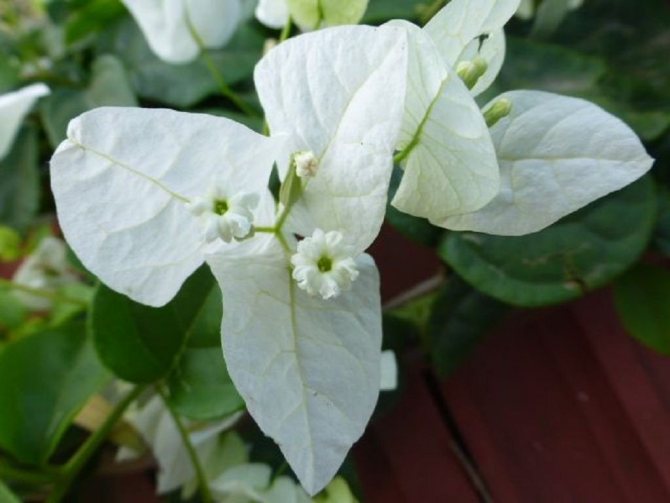

Bougainvillea is beautiful
Bougainvillea Peruvian. Long shoots do not produce lateral shoots. They are covered with narrow foliage, at the base of which short thorns hide. The variety consistently blooms a large number of inflorescences. Their bracts have a double shape and a slightly wrinkled surface.
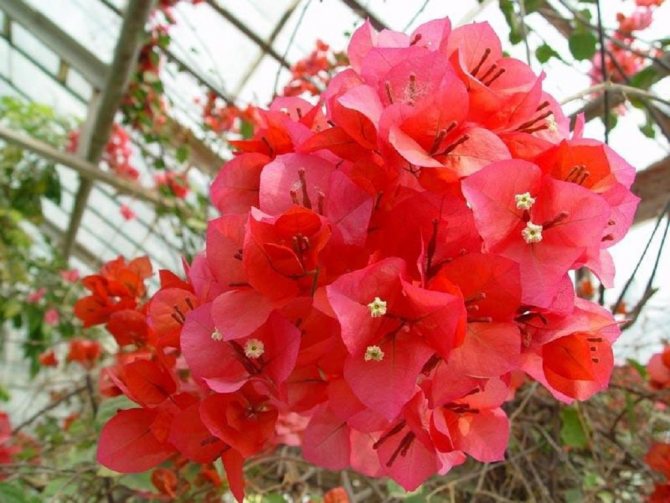

Bougainvillea Peruvian
Popular species and varieties
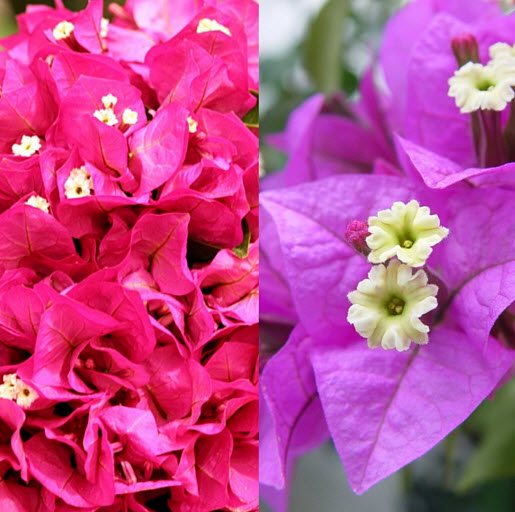

Among the few species of bougainvillea, only a few can be grown at home. Most often you can find Brazilian species: naked bougainvillea (Bougainvillea glabra) and wonderful bougainvillea (Bougainvillea spectabilis). But plant varieties are striking in diversity. They differ not only in shape, color, number of bracts, but also in the color of the leaves.
Bougainvillea Sanderian with purple bracts and abundant flowering is considered one of the best. The most common varieties include the 'Vera Deep Purple' bougainvillea with large fuchsia-crimson bracts and abundant flowering. Lovers of variegated leaves will like the 'Orange Ice' bougainvillea, which strikes not only with its bright orange bracts, but also with variegated variegated leaves. The interesting color of the leaves is also characteristic of the 'Mini thai' variety. Bright green leaf blades are framed by a fluent border. In addition, the plant is compact and forms a well leafy crown.
Bougainvillea 'Double red' with red flowers looks very impressive, thanks to the double bracts. Among the interestingly colored varieties, the bougainvillea 'Snowcap multi' stands out, the bracts of which have a two-tone white-pink color.
Description of the flower
Bougainvillea is a perennial plant with long, creeping branches. The shrub is tall, with good care it can reach 5 meters in height. The branches of an adult flower over time begin to lignify and thicken, which gives the plant the appearance of a miniature tree. The trunk is covered with dark brown bark, which turns gray with age. Branches are spreading, covered with sharp long thorns.
Young shoots are covered with oval-shaped leaves of bright green color. The sheet has one peculiarity - it is folded along the central vein.
The shrub becomes covered with small single flowers during flowering. The plant gained its popularity not because of the flowers, but because of the large bracts that surround the nondescript flower. In shape, it looks like a leaf with a thin transparent surface. The color can be any: from snow-white to dark crimson. Bougainvillea flowers fade much earlier than the bracts.
Fruits are formed only with natural pollination. In natural conditions, butterflies and hummingbirds are pollinators.When grown in an apartment, the plant does not form fruit.
Popular questions about care and maintenance problems for bougainvillea
What is the lifespan of bougainvillea?
When kept at home, life expectancy does not exceed 5-10 years. The plant does not die, but it becomes very woody and stops blooming. In greenhouses, individual specimens can live up to 30 years.
Is the plant poisonous?
Bougainvillea does not belong to poisonous indoor plants and is safe for humans and pets.
Why doesn't bougainvillea bloom?
There are several reasons for the lack of flowering:
- lowering the temperature during the rest period is not ensured;
- insufficient lighting;
- excess nitrogen in the soil.
Why do bougainvillea leaves fall?
Leaves can fall naturally as the plant prepares for winter. In summer, leaf fall can be associated with the movement of the plant from place to place or a draft.
Creating man-made beauty with bougainvillea
A single specimen of a tropical flower can delight from one to 10 years under cultivation conditions. Bougainvillea reaches its maximum decorative effect at the age of 4-5 years. The bushes planted in the ground of the greenhouse from the south side are especially beautiful. In summer they turn into avalanches of flowers. Compositions with different colors are especially beautiful.
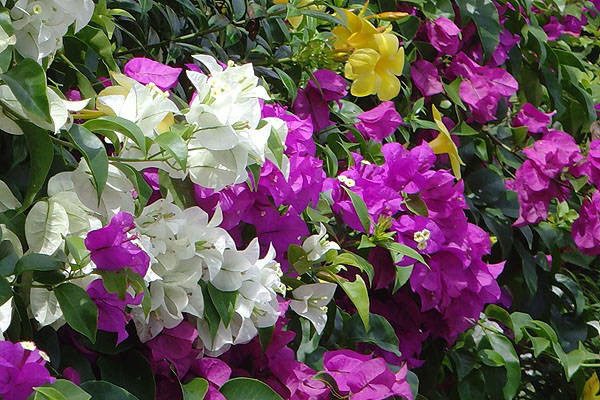

There is another way to use the effect of a separate bush with different colors. Initially, several plants are planted in one tub, an intertwined trunk of several vines and a lush multicolored bush are formed by pruning bougainvilleas.
Why Bougainvillea doesn't bloom
If Bougainvillea does not bloom at home, then you have not fulfilled some of the conditions:
- did not provide the flower with a winter rest period;
- did not provide a sufficient level of illumination throughout the year;
- planted a flower in an oversized pot, and the roots did not have time to master the entire space;
- in a cool rainy summer, they did not create comfortable conditions (little light and heat);
- overfed the flower with nitrogen fertilizers.
If you think that you have conscientiously followed all the instructions, and Bougainvillea still did not bloom at the right time, try to force it to bloom. To do this, stop feeding it, sharply reduce watering and spraying. In this state, hold the guilty beauty until flower buds appear on young shoots. Then start regularly watering and feeding (but not feeding!) The plant. Carefully follow all the care recommendations, and Bougainvillea will definitely bloom.
Why do leaves turn black or turn pale and other difficulties arise
First of all, problems with bougainvillea are the consequences of violations in care.
Brown spots on the leaves and other consequences of improper care - table
| Problem | Possible reason | How to fix the situation |
| Dry brown spots on leaf blades | The plant got sunburn |
|
| The leaves turn pale, the flower throws them off | Iron deficiency - chlorosis | Feed and / or sprinkle the plant with iron-containing fertilizers, for example, iron chlorosis (one procedure is enough). |
| The leaf blades turn black | Excessive watering |
|
| Too hot and dry indoors |
|
| Stunted growth | Potted soil is too dense or has poor drainage | Transplant the flower with light, fertile soil.Pour expanded clay on the bottom of the container in a layer of 2-3 cm. |
Under good conditions and with the correct watering regime, bougainvillea is practically not affected by pests and diseases, but with excessive moisture or dryness, it can be annoyed by shield aphids, spider mites, mealybugs, and the plant can also be sick with mildew or root rot.
How to treat bougainvillea for fungal diseases and pests - table
| Diseases and pests | Signs | Reason for appearance | Treatment and prevention measures |
| Root rot |
| Cold air in the room with too much watering |
|
| Mildew | A dangerous fungal disease in which white spots appear on the leaf blades. | The room is too humid |
|
| Mealybug | Off-white cotton balls appear on the leaves. | The room is too humid |
|
| Spider mite |
| Dry indoor air | Treatment with Actellik's solution (according to the instructions) helps to get rid of the insect, spraying with the drug must be repeated three times at intervals of five to seven days. |
| Shield aphid |
| Not enough humid air |
|
In addition to fungal, there are also bacterial diseases of indoor plants. Their source can be poor-quality soil, as well as other flowers. The likelihood of becoming infected is greatest for bougainvillea, which is weakened by improper care. For treatment, bactericidal drugs are used.
Resuscitation
To save bougainvillea with damaged roots, you need to carefully remove the plant from the pot and wash it. Damaged plant roots are cut off and covered with wood ash. Thus, bougainvillea is reanimated.
If the bougainvillea is accidentally broken, then it is necessary to carefully trim it. Over time, it will sprout new shoots.


Vaccination of a different variety
Sometimes amateur flower growers, to create an original, multi-colored type of Bougainvillea, graft a different variety on its shoots. For example, a stem from a specimen with red bracts is grafted onto a flower with pure white bracts.
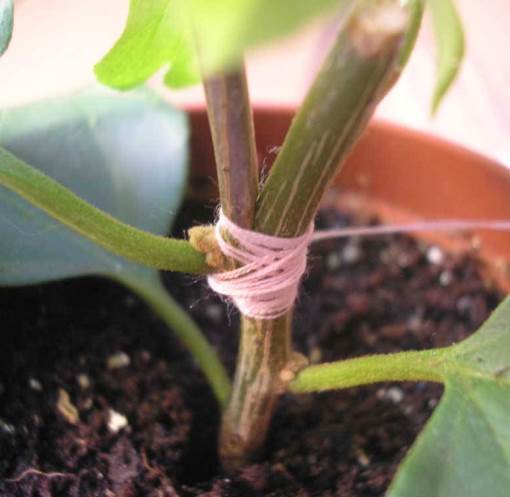

They act like this schematically. A shallow lateral incision is made on the stock with a sharp, clean instrument (knife). They also cut off the scion from Bougainvillea of a different variety. Insert the turned end of the scion into the side section of the rootstock. Medical glue and grafting adhesive plaster, fix the vaccination site for several months.
Illumination
One of the most important parameters for home bougainvillea is light. She is not afraid of direct rays and the best location is southern or western windowsills.
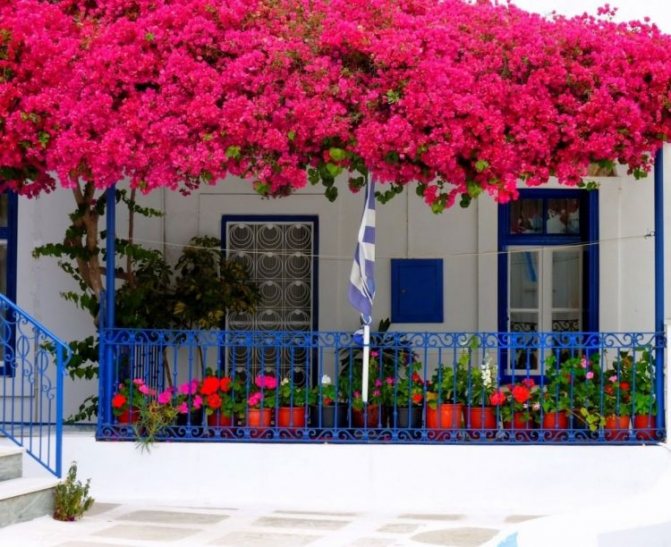

The minimum daylight hours are 5 hours. Lack of sun provokes strong upward growth and lack of flowering.
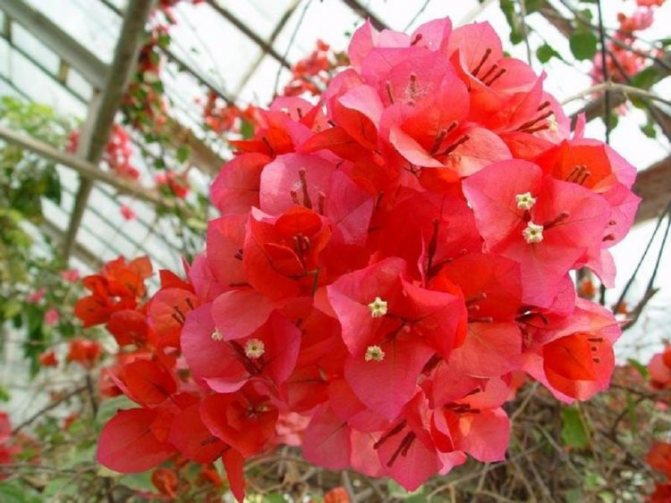

In winter, additional lighting is needed, without which the plant will become lethargic and lose its decorative effect.
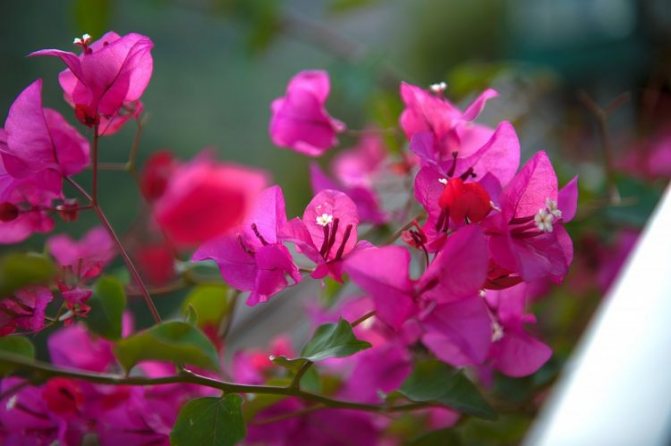

Planting Bougainvillea in a Pot
When planting cuttings or seedlings of Bougainvillea from seeds, you will have to take into account many nuances, from choosing a container to choosing the most suitable place.
Pot
For an indoor Bougainvillea flower, a spacious container is not needed. In a large pot, the liana will actively grow the green mass, but it will not bloom soon. For the roots, a large pot is also undesirable, since the process of braiding an earthen coma will take a long time and can lead to acidification of the soil. Make sure that the holes in the bottom are large. Home bougainvillea does not tolerate overflow, and in this case there will be no risk of flooding the roots, even with too abundant watering.
Initially, a pot with a diameter of 10-12 cm is sufficient. As it grows, the grown bush can be transferred into a container of a larger diameter.
Priming
The soil for home bougainvillea is chosen nutritious, with good aeration and moisture capacity and slightly acidic (Ph not higher than 5.5). Any ready-made soil (for flowering plants or universal) meets these conditions. If the Ph value is higher than 5.5, additives can be added that neutralize acidity, for example, vermiculite or wood ash. Among other things, they will make the soil looser and improve its aeration. The soil can be prepared independently by mixing leaf and sod soil, humus and sand of coarse fractions (or vermiculite) in a ratio of 2: 2: 1: 1.
Landing
A layer of drainage (expanded clay or pieces of polystyrene) with a height of 5-7 cm is poured onto the bottom of the pot, and a substrate is poured on top of it, poured with warm water, a recess is made and the stalk is vertically lowered into it, deepening by about 1/3 of the height. Since young roots are very fragile, care should be taken not to damage them. To keep them intact, it is best not to compact the soil around the stem. It is impossible to put a seedling in the open sun right away. First, he must adapt to the new conditions on the windowsill with diffused, dim lighting. For 3 weeks after planting, the cuttings are not fed.
Pests
Very rarely, this vine is attacked by sucking parasites. But, nevertheless, sometimes it happens. Suddenly, cobwebs (spider mites), mealy bloom (mealybug) appear on the leaves, or they become light and sticky (aphids). Folk remedies (a warm shower, a solution of laundry soap, tincture of garlic, ash) will help get rid of parasites.
But it is safer to treat the affected plant with special preparations - insecticides against these insects. The store will tell you which remedy is most effective. We recommend Aktara, Aktellik or Fitoverm. According to the instructions, the treatment should be repeated a couple of times to completely destroy the pests. How many times the plant should be treated, and with what time interval - see the instructions.
Growing mistakes
In order for the flower to be healthy for a long time and delight its owners, it is important not to make mistakes in caring for it.


Frequent rearrangements and a radical change in environmental conditions can become the basis for the dumping of leaves and bracts.
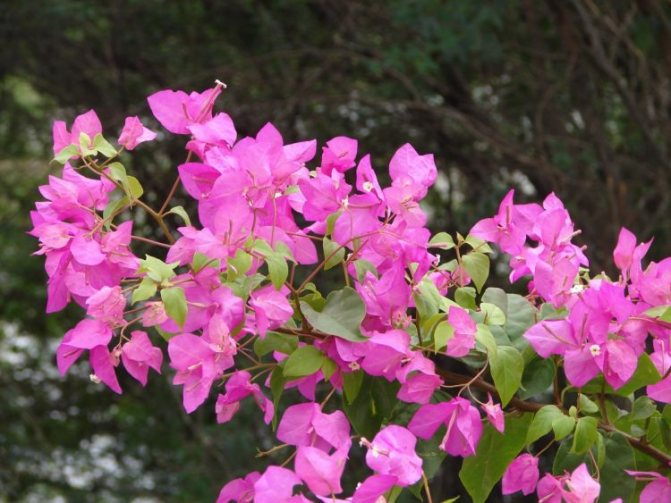

Lack of light affects the visual appeal. Strong upward growth begins, the greens become pale. Peduncle formation stops.


Temperatures below +8 ° C cause intense leaf fall. Sometimes a similar phenomenon can be observed in a plant that is undergoing adaptation in a new place.
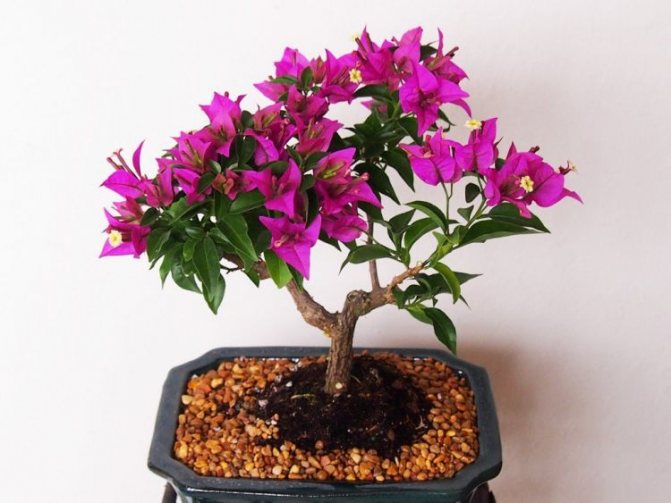

Pest attacks and poor watering also cause a decrease in the amount of greenery. Too warm wintering adversely affects flowering.


Growing bougainvillea requires care and skill, some procedures must be carried out regularly and in a timely manner. Because of this, it is more suitable for experienced florists than for beginners.
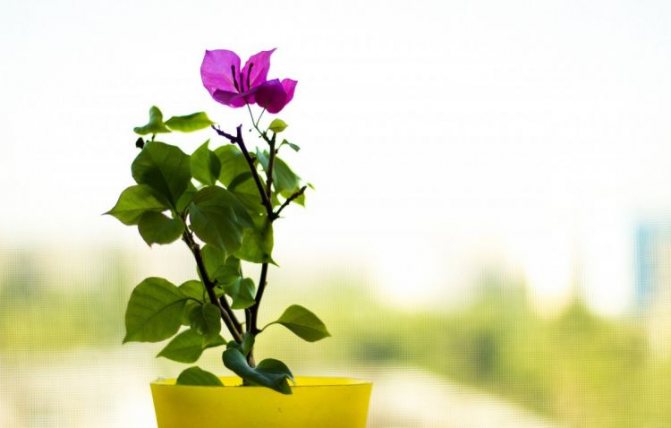

But if everything is done correctly, then a bright Brazilian beauty will settle on the window, which will become a real decoration of the flower collection.
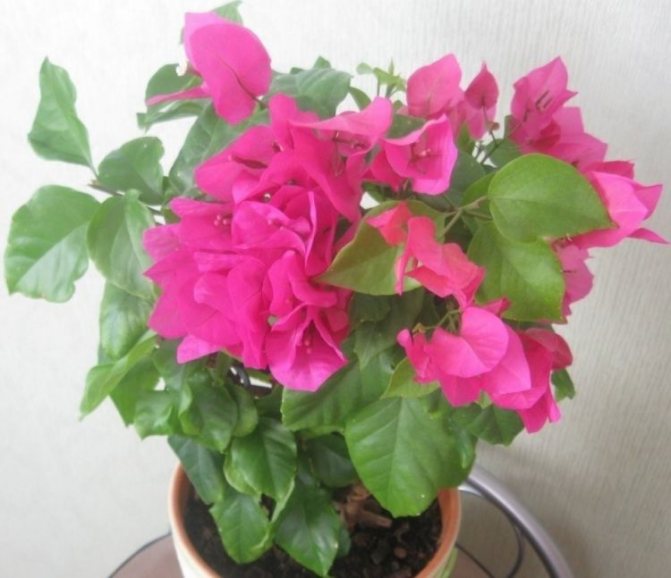

Diseases
Bougainvillea, although a tropical sissy, is resistant to diseases.Only severe violations of its content can break her immunity.
If Bougainvillea's leaves fall off in preparation for hibernation, this is a natural process. At other times, this may be caused by stressful situations: they put the pot in a draft, moved it to another place, or simply turned it over with the other side to the sun.
When buying a flowering healthy plant, at home you watch with chagrin as it begins to shed both leaves and bracts. Don't worry, this is Bougainvillea's reaction to moving from the store to your home. If you take care of the flower according to all the rules recommended by us above, it will soon become overgrown with green leaves and will thank you with lush flowering.
The same problem can arise after the end of the summer season in the garden, with the return of Bougainvillea to the apartment. Even a rearrangement from one window sill to another, poorly illuminated by the sun, can provoke a flower to drop leaves.
If the leaves have lost their bright color, Bougainvillea may have developed chlorosis. This happens when there is not enough iron and other nutrients in the soil. It is necessary to feed and spray the flower with iron chelate.
If the plant has leaves with soft white spots, then you have poor ventilation and an excessively damp substrate. Provide ventilation and water sparingly. Remove damaged leaves.
If Bougainvillea's leaves begin to turn yellow and fall off, most likely you are watering the plant too abundantly, the soil turns sour, and the roots lack oxygen. This happens most often during the winter. Reduce watering, stop spraying the flower, and stop feeding. Let him stop his vital activity for a while - he does not eat, does not drink, only sleeps.
If the flower has lost its turgor, spray it with a growth stimulant, cover it with a plastic bag and leave it in a diffused shade for two to three days, periodically airing this greenhouse. The turgor should recover.
If the flower has stopped growing, then its pot is too cramped, the roots have nowhere to grow and develop. Bougainvillea's growth slows down and stops altogether until you transplant it into another, more spacious pot. A plant that is too old, which is more than 10 years old, also stops growing. It becomes woody and stops blooming. Take care of its reproduction in time.
When a plant disappears due to rotting of the root system, it must be rescued. Remove the bush from the pot, carefully free its roots from the substrate. If necessary, soak them in a bowl of warm water for this. Cut off damaged and rotten roots, keep healthy ones in a phytosporin solution. Then treat all sections with crushed charcoal or wood ash. Transplant the treated plant into a new substrate and strictly follow the rules for its maintenance in the future. Also treat the crown with a solution of phytosporin.
Florist reviews
My bougainvillea is very tiny, it blooms and pleases more than it grows, which does not upset me at all, such a compact beauty. Care on it is very simple, do not overflow with water, water when the earthen lump dries well, and provide a sunny place, after all, this is a guest of their hot countries, and the sunnier, the more comfortable it is, but it is not worth "frying" for days, it will drop the leaves ... In summer, of course, it is more active, but if the necessary conditions are provided in winter, it will continue to delight with flowering and create the feeling of an approaching vacation!
kat-malysh
Every summer, from April to late autumn, bougainvillea pleases with its flowering. I wanted to get it for a long time, I twice brought cuttings from Turkey, two of them even took root, but then they died anyway. Finally, I managed to buy an adapted small plant in my city. My buga is a mongrel, just scarlet. It grows on the western window, stands on the loggia from the very edge near the wall, upholstered with clapboard. The tree heats up in the sun and heats up the flower.My bougainvillea is "fried" in the sun. Withstands overdrying, it shows when exactly it is time to water: the leaves soften and hang. She did not change the earth for 5 years, it blooms beautifully. Roots entangled everything in a pot so that even a stick does not stick. There is no room for a larger pot, and I don’t want to fiddle with and disturb the plant with the replacement of the earth.
Tintinka
This beautiful vine was presented to me by my husband, knowing about my desire to fill the house with greenery and flowers. I searched the whole city, barely found it, attracted a familiar florist. It turned out that in Ryazan this is a rather expensive and rare plant. The sun lives in our apartment for half a day, so the plants have to be selected carefully so that they do not suffer from excess sunlight. And somehow I don’t want to hang the windows with gauze, and I don’t have time. Bougainvillea is ideal in our case, because at home - in Brazil, for example, these vines enjoy the sun all day long. For this, the local population fell in love with them as decoration of all kinds of hedges.
KOSCHECHKA-BLACK
Our Bougainvillea hibernates in an apartment on the windowsill and stands near the battery. The only drawback is that in such conditions, she sheds leaves that need to be removed. But the plant quickly recovers and gives many new shoots. There was no experience with wintering in the open field, but in the Crimea this plant overwinters in this way. But the climate is also significantly different. For ten years we have already got used to the winter fall of leaves, but every year Bougainvillea pleases us with its flowers. Our family loves this plant and calls it a lilac tree.
VicTan77
The beauty does not require special care, but if something is not for her, she sprinkles with leaves (autumn includes). Does not like overdrying the earth. I feed with universal fertilizer, like Kemira-lux, without fanaticism. When she likes everything, it blooms almost constantly. Resting in winter, not blooming. No matter how much I tried, I can not root the branch, it does not work out in any way. In general, I recommend, especially if you come across a hybrid.
COLORS OF SUMMER


